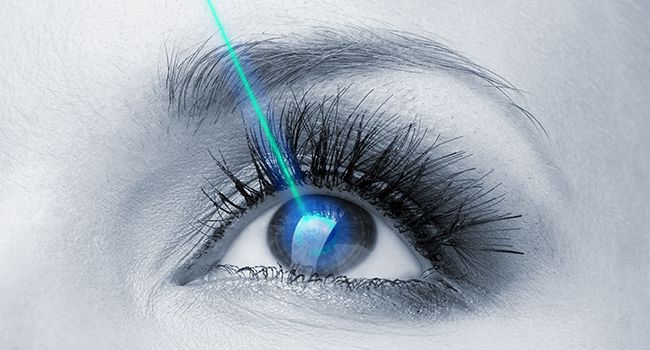
Before we dwell on what a retinal tear implant is, let’s have a basic understanding of the retina. To put it simply, the retina is a thin layer composed of tissue that lines the back of the eye on the inside and is located near the optic nerve. The purpose of the retina is to receive light that the lens has focused, convert the light into neural signals, and send these signals ahead to the brain for visual recognition. This further brings us to the discussion of the vitreous, which is defined as a clear gel-like substance that fills the back cavity of the eye that is lined by the retina. This gel is naturally attached to the retina at the time of birth, but, as ageing occurs, the gel separates itself from the retina and creates a posterior vitreous detachment or PVD. This happens without any issue, in the vast majority of the cases.
However, in some cases, people have a more “sticky” vitreous as compared to others. As the vitreous separates from the retina in the case of these people, they experience an abnormal pull (abnormal vitreo-retinal adhesion) which causes the retina to tear. In some cases though, a retinal tear might be a result of eye trauma, but mostly a retinal tear occurs spontaneously due to a PVD. Next, we come to a somewhat related entity which is known as retinal holes. Often, the terms retinal tears and holes are interchangeably used, and as per eye doctors, a retinal tear develops when the vitreous pulls on the retina. At the same time, retinal holes develop because of a gradual and progressive thinning of the retina. It should be noted that a retinal hole is typically smaller and has a lower risk for causing a retinal detachment.
What are the risk factors involved?
Risk factors as such do not play as significant a role in case of retinal tears as they play in various other eye conditions or diseases. However, there are a few factors that increase the likelihood of such tears. These factors include:
- Advanced age
- Degree of myopia (nearsightedness)
- Associated lattice degeneration (thin patches in the retina)
- Trauma
- Family history of retinal tears or detachment
- Prior eye surgery
However, unfortunately, there is no way to predict who might develop a retinal tear or when it might occur.
What is the diagnosis procedure?
Diagnosis is done by a retina specialist using scleral depression which involves applying slight pressure on the eyes and or by using a three-mirror lens. These are the most vital steps while diagnosing a retinal tear. In cases of a limited view of the retina due to factors like overlying haemorrhage, an ophthalmic ultrasound can also be used as an aid in diagnosing a retinal tear.
What are the treatment options?
Doctors employ the following methods for treating a retinal tear-
- Laser photocoagulation and freezing treatment (cryopexy)
- Pneumatic retinopexy
- Scleral buckle
- Vitreoretinal surgery
Experts are of the view that the treatment is excellent and effective in cases in which a retinal tear is diagnosed before it takes the shape of a retinal detachment. Often a retinal tear is treated sometimes by employing a freezing procedure that is known as cryotherapy treatment. The procedure is slightly uncomfortable, and generally, topical or local anaesthesia is used by eye doctors.
The treatment creates spot-welding around the edges of the tear, which almost eliminates the danger of the retinal tear progressing to retinal detachment. However, after a retinal tear has been treated, there always remains a future risk of developing additional or separate retinal tears. Doctors, thus, advise continued monitoring.
It should also be noted that not all retinal tears require treatment and tears can heal by themselves in case of people who show no symptoms. Some tears are capable of treating themselves, which means they can develop adhesion around the tear without treatment, and these situations can be therefore treated without a professional treatment as well.
On a closing note, we would like to add that we hope we our readers will now have a better understanding of retinal tear. However, if you still have doubts or looking for an expert opinion on the same, do get in touch with us and let our expert ophthalmologists solve your queries.
Article: What is a retinal tear implant? Read our expert view on it.
Author: CFS Editorial Team | Oct 22 2020 | UPDATED 05:25 IST
*The views expressed here are solely those of the author in his private capacity and do not in any way represent the views of Centre for Sight.

